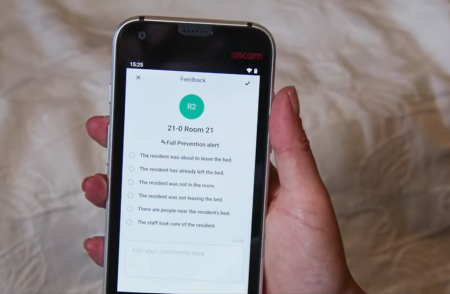A new device trailed in Durham is helping to prevent falls from care home residents getting out of bed unaided.
Durham County Council’s Supporting the Provider Market Team have worked with Health Innovation North East and North Cumbria on the successful pilot of an innovative care monitoring tool developed by the NHS. The technology was piloted in 6 care homes across County Durham during which falls were reduced by more than half.

Vitalerter warns staff by sending information to an app on mobile handsets up to 3-4 minutes before a resident attempts to exit their bed. In this way, the technology predicts and prevents falls, and enables staff to make early intervention to assist that resident.
The technology also monitors how frequently a resident moves and repositions themselves which helps reduce the amount of intrusive manual turns needed to reduce pressure sores.
A recent evaluation carried out by Sunderland University and the Health Innovation North East and North Cumbia found that Falls reduced significantly during the pilot by more than half when the Vitalterter device was used for residents at risk when leaving their bed unaided.
Emma Grebby is the home manager at Eden House care home, one of the 6 home involved in the pilot said: “Vitalerter is a pilot that we've been involved with and it benefits the residents by reducing the number of falls that they have. There's a device on the bed which alerts staff to movement via their heart rate changing and that allows us to access their rooms quicker and resulting in less falls.
"It results in less admissions to hospital and not having to contact the Emergency Services as much and it means that the residents can stay in the home rather than having to leave the service.”
The reduction in falls seen across the pilot also led to a reduction in one-to-one support when a resident falls and requires support and medical attention. This also provided a more even distribution of care worker time among residents who were not categorised as fall risks, improving the provision of person-centred practice.
The Vitalerter’s ability to reduce manual turns means a greater distribution of staff time, less physical strain of staff members and greater comfort and quality of sleep for residents in the future. There are further potential savings that could be passed on lessen the impact associated with the costs of falls on secondary care, such as ambulance and hospital attendance and impacts within the care home upon the residents return.
For further information about the benefits of Vitalerter contact Diane Moore, Supporting the Provider Market Team: diane.

